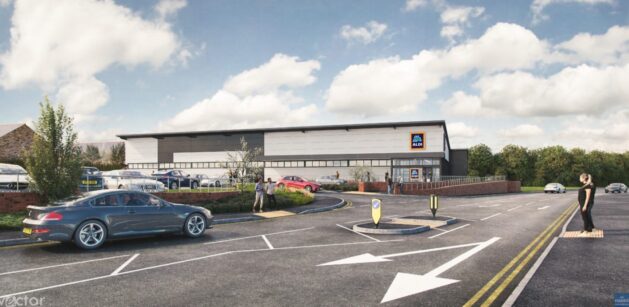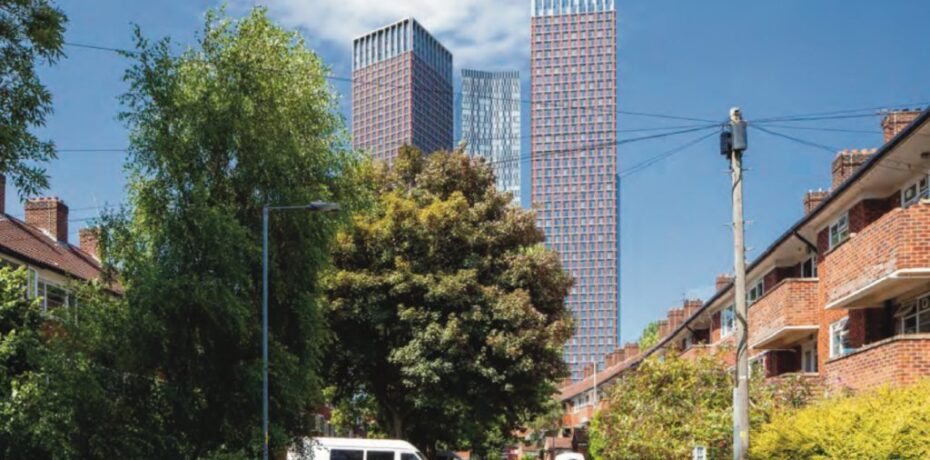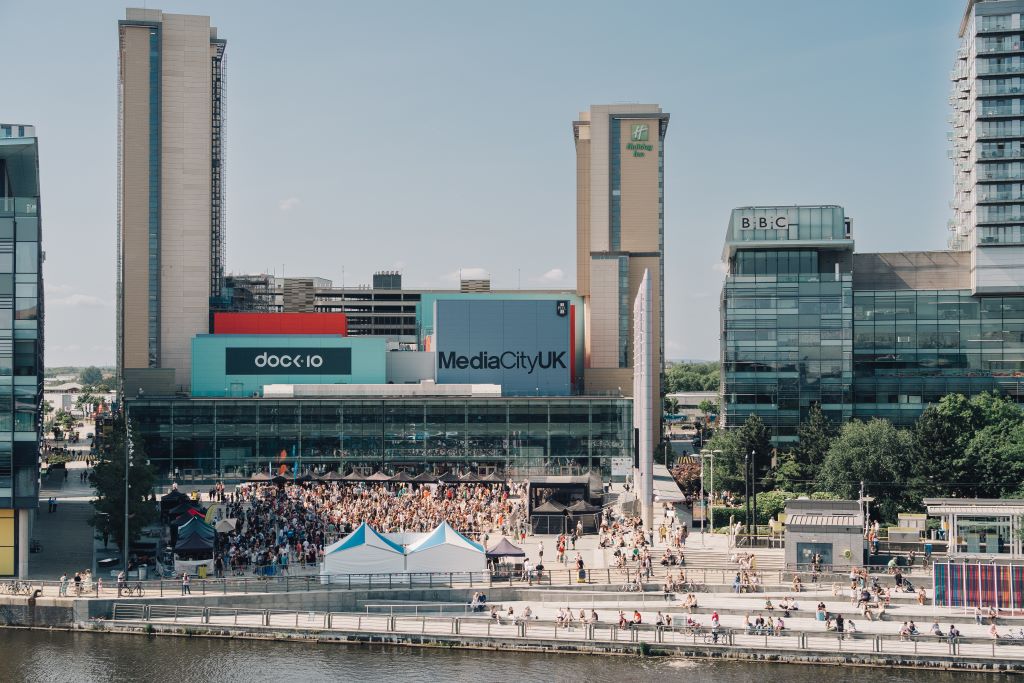The Subplot
The Subplot | Down with skyscrapers, market failure, retail bargains
Welcome to The Subplot, your regular slice of commentary on the North West business and property market from Place North West.
THIS WEEK
- Peak skyscraper: is the end in sight for Manchester’s skyscraper development scramble?
- Boris and social care: market failure means the North West is badly served by the care home development sector
- Retail property is back in fashion: income plus residual value equals happiness

ALL FALL DOWN
The beginning of the end of Manchester’s skyscraper boom
Goodstone Living, the new £1bn BTR operation funded by Australian giant Macquarie Group, says it isn’t buying into Manchester skyscrapers. Is the tide turning against high-rise living?
The past five years have seen skyscrapers sprout all over central Manchester and Salford. Blocks of 50-storeys or more are no longer novelties, and the summer saw another crop cleared by planners. Renaker, which has led the skyscraper building boom, are about to submit SimpsonHaugh’s plans for four towers ranging from 39 to 60 storeys at Trinity Way. A few weeks ago Great Jackson Street Estates, controlled by Salford-based investor Aubrey Weis, won approval for Hodder + Partners’ twin 56-storey towers at Great Jackson Street (pictured). Surely this is a market showing no signs of slowing?
Meet the rethinker
Talk to Martin Bellinger, Goodstone Living founder (and BTR pioneer from his Essential Living days) and you begin to wonder if the end might be in sight. Goodstone’s reasons for steering clear of towers are illuminating, and suggest something of the kind might be happening. They boil down to standards and branding, and the shorthand for both is ‘quality.’
His proposition
Goodstone sees itself as a pioneering ‘third generation’ BTR. Ten years and 140,000 apartments on from the birth of build-to-rent, Bellinger thinks operators and the investors that back them are beginning to refine the product. As one of the fathers of BTR he should know. Out goes a lot of high-profile amenity provision, in comes a firmer focus on creating a home, he says.
Homes matter most
“We’re trying to bring BTR back to the product, which is a home, a place people want to call home, a place people want to – and aspire to – live in, concentrating more on the home rather than engaging in an amenity arms race,” says Bellinger. Piling on the amenities without perhaps considering the amount of uptake of those amenities, and the maintenance and operation costs, is not the Goodstone way.
Towering folly
Because Goodstone is thinking about homes, it doesn’t like skyscrapers. “Recent planning consents in central Manchester seem to have largely followed a type, which is a significant tower on a very small plot. These typologies don’t tend to lend themselves to our design principles,” says Bellinger. This means fire safety and plot density. Says Bellinger: “We’re at the forefront of designing for fire safety, including a second means of escape. We don’t intend to design in any other way. And these Manchester towers also often don’t have much usable outdoor space, and that’s a priority for us because we want to deliver for the wellbeing of the residents. We think wellbeing is going to be increasingly important to residents in their homemaking decisions.”
Who do they mean?
“Yes, Manchester is an attractive target for us. We may have to find a plot ourselves and bide our time and wait for the right thing to come along, and we’re prepared to do that, so that if our next acquisition has to be somewhere else, it will be,” says Bellinger. “Manchester has a brilliant BTR market and the Goodstone product would be incredibly well-received there. But I’m not in the business of compromising on quality or our design principles. I’d rather stick to our guns.”
‘No thank you’
More generally, Goodstone doesn’t sound terribly impressed with the sites and ready-to-build schemes it has been offered. “When we’re looking at site acquisitions, we’re looking at whether it will suit our design philosophy, whether the transport and facilities are good, and above all whether we can create our type of sustainable and innovative customer experience,” says Bellinger. “We’ve seen an awful lot of sites in the last six months which we simply passed on, because they might be good for other BTR developers, but we know they don’t fit with our aspirations, and can’t be made to fit at reasonable cost.”
I said ‘no thank you’
“There’s a lot of people at the moment who are around the market, with consented or soon to be consented sites, that are looking to find an investor, and a number of these schemes are superficially attractive on location, financials, and other metrics – but the thing we have to be wary of is that despite the on-paper attraction, we stick to our design principles,” Bellinger insists. “And that’s always difficult, it’s often hard to say ‘thank you but no thank you’ when someone holds you an open bag of toffees – the temptation is to take one – but we have to stick to our guns. We’ve got to stay focused. The important thing for us to remember is the residents will be in our communities for 10, 15, 20 years and investment decisions have to be predicated on that. BTR is the opposite of short-term thinking.”
Others will follow
Is Goodstone an outlier? Certainly not. Adam Brady, executive director of HBD, says: “The viability of skyscrapers in Manchester has always been marginal at best, for any use – the economics, driven by demand and shortage of space, don’t add up in comparison to capital cities like London. As a BTR product, skyscrapers also pose additional challenges – it can be more difficult to create an identity and a community, including outside amenities. You also run the risk of ending up with a lot of identikit product which potentially limits your market and your ability to drive rents, which will then be less attractive to investors.”
On the other hand
JLL’s Stephen Hogg takes a different view. “The biggest threat to the supply of residential to the city is land supply and planning. Skyscrapers have proved to be incredibly popular with the Beetham Tower standing the test of time and many apartments having been refurbished to a fantastic standard and trading well. Renaker, the skyscraper king, has had great success at Deansgate Square and Greengate with more in the pipeline. Buyers will always buy height and as long as prices keep pace with build costs then I see no reason as to why we will not see more,” he says.
Money talks
Investors are still very much engaged with Manchester BTR (and PRS). It will be interesting to see what they buy, and at what kinds of prices and yields. Last week’s sale of Moorfield Real Estate’s 232-unit low-rise Trilogy development to Barings for £53.5m is hardly proof that investors have turned their back on towers. But it is a straw in the wind, a wind gusting at gale force thanks to the volume of money looking for a home in the city. Tom Cressey, real estate partner at JMW Solicitors, says: “Land prices in Manchester have remained strong, so even with high build costs the economics continue to support building upwards. Rental growth over the past 12 months evidences the lack of supply, and we are still seeing sales to BTR investors at very sharp yields.”
Also this
Meantime, non-BTR tower development depends on two main variables. First, the willingness of buy-to-letters and owner-occupiers to buy into leasehold. Given the post-Grenfell cladding scandal, leasehold no longer looks like a good bet (and maybe looks like a scam).
We’ve reached peak skyscraper
Second, the willingness of Manchester City Council to grant consent. Plonking mighty towers down everywhere has not been popular with the Labour backbenchers, nor has the leadership’s scowling approach to doubters. Sir Richard Leese’s replacement might think bending to the wind on tower policy was a low-cost and (noticing Goodstone’s views) market-friendly way to mark the new regime.
Conclusion: the Manchester skyscraper surge is not over yet. But investor pressure may mean the rate of growth slows ahead of a market rebalance.
DRIVING THE WEEK
 Boris’s social care fix
Boris’s social care fix
There are good grounds for doubting that raising National Insurance contributions will help solve the long-standing problem of social care for the elderly. But it is certain that the health care property business is due for disruption, particularly in the North West.
Research released last Thursday into the health care development sector paints a grim picture. In the last decade, the UK’s over-65 population has grown by 22% yet the number of care home beds has risen by only 6%. As needs have risen, development has stalled. Knight Frank calculates that total care home beds across the UK grew by a shameful 0.1% in the past year. Today we have 480,072 beds across 12,034 care homes, and while it has been a funny year this sluggish development pipeline is part of a longer-term market failure.
Drop in the ocean
As the pandemic eases, and developers rediscover their confidence, supply will nudge up a little. Knight Frank says the pipeline of new beds under construction, in planning or out for construction tender, is about 17,000. The 2021 output figure will be double that of 2020. But there’s a big, big but here.
Market failure
And it is this: the market is not serving the public interest. The supply pipeline is still a drop in the ocean of need, and does nothing to make up for the massive shortfall in development over the last decade. It’s simple logic that a sustained lack of supply helps push up prices, and the major developers and operators are in no hurry to screw up their market advantage.
Posh towns only
Developers are really only interested in the premium end of the market focused on London and the South East, as Knight Frank’s analysis of development hotspots shows. The North West misses out. For instance, the West Midlands’ pipeline provides nearly three times as many new beds, per head of population, than the pipeline in the North West. Yorkshire does better too. Posh places get new care beds, less posh do not, and the North West is among the worst served of all, per capita. Your gran in Blackburn? She can forget it.
More to come
And if the market is failing now, it is going to fail on an epic scale in a few years’ time, as the demographics shift. The population of over-85s is expected to more than double to 3.7m by 2050. Your correspondent hopes to be one of them.
The options
Knowing this, and seeing the regional disparity, a “Levelling Up” government will soon be forced to act. Newly installed levelling up boss Michael Gove has control of the planning system and that could be significant. The Competition and Markets Authority recommended in 2017 that local councils have enhanced powers to plan and make land available. These concerns haven’t gone away as Subplot reported earlier this summer (27 July). Knight Frank points to the difficulty of securing bank lending for care home projects, and the government will want to look at this. Easing use class rules and permitted development rights might help at the margins. But ministers will soon be forced into considering something more radical. Gove is known for his radicalism.
As Knight Frank points out, the UK elderly care market is at risk of reaching capacity by the end of the decade. No government can let that happen and the focus on market failure, particularly in regions like the North West, can only grow.
IN CASE YOU MISSED IT…

North West retail property is hot
A £95m deal this week, a £33m deal last week. Everyone is buying into North West retail. Why?
Peel L&P sold the 143,000 sq ft Trafford Retail Park for £33m. On the face of it this is an odd decision for Peel. Why buy into the dubiously sustainable showbiz world of traditional shopping centres at Barton Square (£50m price tag) and yet sell out of the currently super-hot and fairly safe world of retail parks? For the new owner, UK Commercial Property REIT, the appeal is more obvious and boils down to £2.5m a year in rent as part of a diversified portfolio.
Can’t get enough
Just 24 months ago investors thought retail parks were as attractive as asbestos or flood risk. Today everyone fancies they’ve spotted a chance. Brookfield, the Canadian giant, has piled in, always a signal to the market that something is on the turn. This is because retail park net asset values (NAVs) are rising, and rising by a bouncy like-for-like of 3%-5% a year.
Residual value
Among the other lovely things about retail parks is the yields are good (6%-7%-ish) and the tenants (having survived a retail Armageddon of their own in the last decade) are weatherproof. Best of all, if it goes belly up and retail parks fall out of fashion again, you’ve bags of residual value because large flat sites close to main roads and urban areas are ideal for last-mile logistics or residential. No doubt something like this figured in the UK Commercial Property REIT appraisal: 12 acres close to junction 10 of the M60 is never going to be unwanted.
Also supermarkets
A different but equally powerful set of considerations is encouraging investors into supermarkets. Yesterday Supermarket Income REIT plc bought a clutch of North West supermarkets including the 7.5-acre site of Prescot’s Tesco (£50m), Morrisons in Workington (13.7 acres for £28.9m), Aldi in Oldham (£5.6m) and the Aldi and M&S Foodhall in West Derby for £10.2m.
Also residual value
The deal here is fixed uplift on rents, often with 10-15 years of unexpired leases, which these days is pretty much investor catnip. Confidence that retailers will survive is high, thanks to improved margins for online grocery. The risks that the competition authorities, or mergers and acquisitions, prompt rationalisation of sites is mitigated by the urban logistics and residential residual value.
The Subplot is brought to you in association with Cratus and Oppidan Life.






Mr Bellinger comments are interesting. Not sure what his schemes would offer from a fire safety point of view that the current proposals don’t. They all have wet risers, sprinklers and are constructed using non combustible materials.
It’s safer to live in a modern apartment than a house from a fire perspective.
Sounds like he wants in but doesn’t fancy going up against the current competition.
By Mrqs
Mr Bellinger comes across as rather arrogant. If Goodstone don’t think there’s any good opportunities in Manchester, or if they think everything that has come before them is of inferior quality then they can do one. As for this being the end of the skyscraper boom – yeah right!
By Vic
Bit of a publicity stunt if you ask me. If you don’t want to build skyscrapers, don’t. There are lots of developers out there who just build low-rise. No need to make a song and dance about it though.
By Andrew
“Goodstone Living, the new £1bn BTR operation funded by Australian giant Macquarie Group, says it isn’t buying into Manchester skyscrapers. Is the tide turning against high-rise living?”
This is not responsible reporting, as there are so many sub-sectors to PRS, BTR, etc, and just because one fund states that they’re not buying into Manchattan does not mean it signals a change in the tide.
Who knows, there made a changer in the tide, but it is PNW’s responsibility to stop chasing the shock-factor to report, and should report in a way that helps stability and sustainability!!
By Anon
Skyscrapers are unsustainable, they cause wind issues and aren’t particularly liveable. Also, look at the build problems at Deansgate Square add the issues with the lifts there.
By Cal
Just a reminder that a shift in sentiment among operators/investors isn’t the only thing that might trouble the skyscraper boom. Manchester council says it plans to be net zeron carbon by 2038, with new buildings all net zero carbon by 2023. Yet carbon-busting skyscraper plans proliferate – as Subplot reported 31 August “Carbon emissions are as much as 140% higher from high-rise, high-density development than from any other combination of height and density. High-density, low-rise (like Paris, and like Manchester used to be) turns out to be the best.”
NB The fire safety gain is, among other things, a second escape route.
By David Thame
Anons complaint about the reporting amounts to suggesting PNW has a responsibility to talk the market up, and suppress news such as this.
They don’t.
Anyone can see the merits of the arguments put. Couple that with rising cost of building (did people know by the way this is partly due to HS2’s demand for aggregate and labour??), and Manchester’s slower than average recovery from the pandemic, and the knock on reverberations for the market are pretty obvious.
Suppressing news doesn’t hide the facts from anyone, much less from market analysts.
By Jeff
Just to echo where David Thame went here, we need to thoughtful about the quality of place making and the sustainability of form. It’s great the city now has some landmark skyscrapers of a certain quality, but when I go to London or Berlin, it’s not the skyscrapers that are impressive its the richness of the urban fabric and life of the street, how many of us are going to Nine Elms to hang out.
By Rich X
Development booms come and go, even London currently has way less skyscrapers under construction than it did a few years ago. But I think everyone can agree that there’s still no shortage of land and development opportunities in Manchester – still tonnes of empty land just east of the city centre that can be built on….
By Alex
It might be a good thing that Manchester has a break from skyskrapers
By Anonymous
Care homes…that’s the real story here. They are like hens teeth in the North West and you only find out when you really really one.
By Anonymous
Jeff, I certainly didn’t suggest that PNW has a responsibility to talk the market up, or indeed to suppress any news. My point was clear that they should use articles with “shock” headlines which may affect the market(s) based upon the comments from a single fund, who are in a field of 1000’s of funds. I didn’t say wether I’m pro-skyscraper, anti-skyscraper, or otherwise. I do concur with your comments about demand for resources from the likes of HS2 and other major projects.
By Anon
*shouldn’t use articles with “shock” headlines …
By Anon
People who argue that there aren’t enough homes for families in the city centre, thats because A CITY CENTRE ISN’T MADE FOR FAMILIES. Cities are meant to have buildings and it will only help Manchester as it will bring a lot more people in and a lot more investment. There are so many high rises still need it and I think there shouldn’t be any break for now.
By anonymous